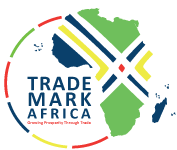Early in May 2014 the TradeMark Africa communications department published an impact study that included the following statement:
“In October 2013, Presidents Yoweri Museveni of Uganda, Paul Kagame of Rwanda and Uhuru Kenyatta of Kenya agreed to implement a Single Customs Territory (SCT) between them as members of the East African Community. Tanzania and Burundi followed suit at the Summit in November 2013.
“At a stroke (of the pen), the agreement removed multiple weighbridges, police and customs checks along the Mombasa-Kampala-Kigali route and introduced computerised clearance and electronic tracking and other innovations that have overturned many of the hurdles to free trade or Non-Tariff Barriers (NTBs) that the Northern Corridor was infamous for.”
The phrase ‘single customs territory’ is fashionable in almost every discussion and media piece about regional integration. It is used in connection with measures to improve efficiency of the Northern Corridor and even with the planned standard gauge Mombasa-Malaba railway line. It is in the name of the single customs territory or SCT, as it is lovingly known, that investments are being made on the Central Corridor from Dar es Salaam to the landlocked countries.
So, what exactly is a Single Customs territory (SCT)? Is it the same as the Customs Union (CU)? Is the East African Community (EAC) going to achieve the SCT in June 2014 as directed by the heads of state?
To answer these questions we need to understand the following concepts concerning levels of integration of countries in trading blocks.
• Where the countries reduce the import duties (tariffs) on goods traded between them the countries constitute a preferential trade area (PTA).
• Where there is no import duty at all (zero rate) on goods traded between them the countries constitute a free trade area (FTA).
• For goods to enjoy preferential or duty-free status they must originate in the exporting country in accordance with agreed rules of origin.
A customs union is a trading block, where members of a free trade area:
(a) adopt and apply a common external tariff (CET) of import duties on goods imported from other countries, (b) remove border controls for duty-paid imports moving across their borders (allowing free circulation of imports), and (c)have arrangements for sharing the duties (revenue), which are collected on imports at the first point of entry. The arrangements may also include compensation to the states that are now importing more from the other states in the CU, for loss of revenue that would have been collected if they imported from outside the CU.
Some trading blocks are intended to be a PTA only and others an FTA only. Some wish to deepen their integration by progressing to a Customs Union because of the associated economic benefits. When countries attain a CU they merge their customs territories into a single customs territory. In other words they become one country for customs purposes. This has enormous benefits, the most important of which is that their total populations constitute a larger market for trade and investment, and the countries benefit from economies of scale.
Returning to the statement above in which, in October 2013, the three presidents agreed to implement a SCT between them, followed in November by the other two countries ¬– what they actually agreed was not about tariffs, as discussed above, but about trade facilitation. Way back in 2005 the five Partner States set out to establish a Customs Union when they signed the Custom Union Protocol. When the formalities for establishing the CU, as outlined above, are completed, a Customs Union will be in place and, for customs purposes, a single customs territory will have been achieved.
What about the initiatives started in October; will they result in an SCT?
The answer is no. They concern Part C of the Customs Union Protocol, pertaining to customs administration, and particularly Article 6 concerning trade facilitation. The activities for establishing the Customs Union are in Part D of the Protocol concerning trade liberalisation (from internal tariffs and non-tariff barriers). The initiatives of the presidents will certainly improve the efficiency of the corridors but they are not central to attainment of an SCT, or a CU.
Taking the above into account, what activities should TradeMark Africa (TMA) and other development partners support to achieve the Customs Union and the resultant single customs territory?
TradeMark Africa (TMA) and other development partners should commission a peer review of the progress so far, the outstanding challenges and recommendations for the way forward. Among the most important challenges are agreement on a formula for sharing revenue and how Tanzania will fit into the Customs Union if they remain members of the South African Development Community (SADC).
















The EAC is moving forward!